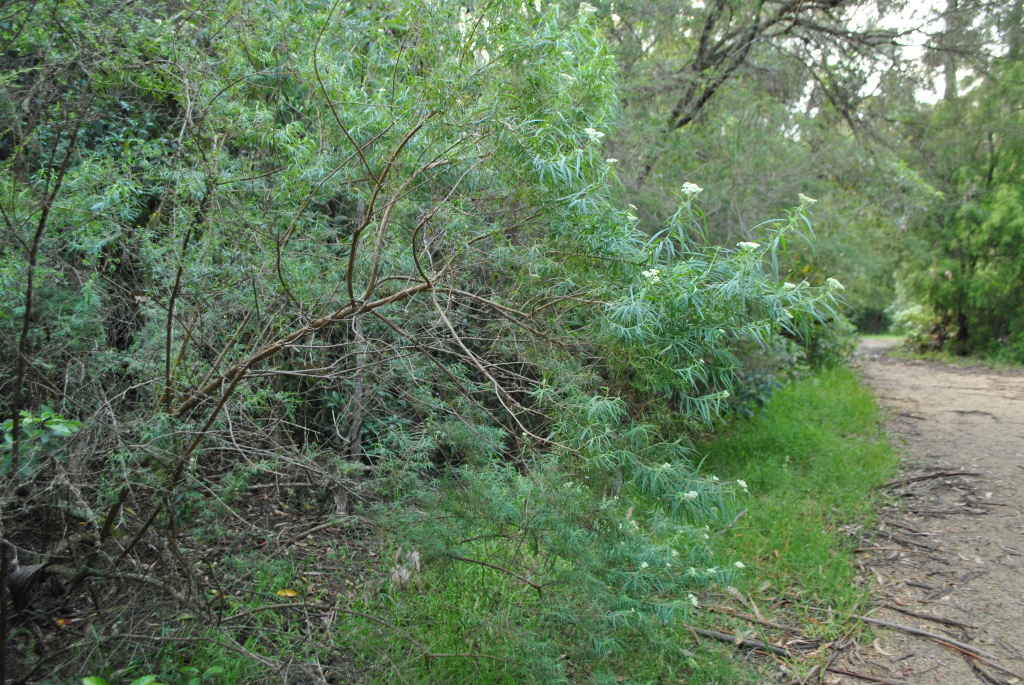Cassinia trinerva
N.A.Wakef.Erect shrub or small tree to c. 8 m high; branchlets cottony, and with numerous short, erect, gland-tipped hairs, viscid. Leaves spreading, narrow-elliptic or narrow-lanceolate, 3-veined (the 2 intramarginal veins finer than midrib) 30–120 mm long, 3.5–6 mm wide, glabrous and slightly viscid above, slightly cottony beneath but also with numerous stalked and sessile glands, apex acute, margin flat or recurved; petioles 1–4 mm long. Inflorescences corymbose, 8–15 cm diam. Capitula 300–500, white, cylindric, c. 2.5–3.5 mm long, 1–1.5 mm wide; involucral bracts 14–18, innermost with lamina deltoid, c. 1–1.5 mm long, white, margin entire, incurved; receptacle bracts absent; florets 3 or 4. Cypsela narrow-ovoid, 0.5–1 mm long, sparsely papillose; pappus bristles 2–2.5 mm long, apex narrowly clavate. Flowers Dec.–Mar.
VVP, GipP, CVU, EGL, EGU, WPro, HSF, HNF, Strz, MonT, HFE, VAlp. Also NSW, Tas. Locally common understorey shrub of tall open-forests in high-rainfall areas, also in scrubs on dryish rocky sites and margins of closed forests in the east, with an isolated occurence at Ben Major Forest area north of Beaufort.
Puttock, C.F. (1999). Cassinia. In: Walsh, N.G.; Entwisle, T.J., Flora of Victoria Vol. 4, Cornaceae to Asteraceae, pp. 742–745. Inkata Press, Melbourne.
 Spinning
Spinning
